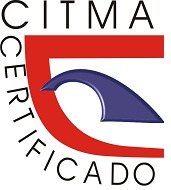Computer Tool for Measuring and Predicting Coastal Line Change.
Keywords:
citizen science, coastal line, environmental, monitoring, predictionAbstract
The coastline is a critical element in human occupation, environmental biodiversity, economic activity, and recreational services. Coastal dynamics are a complex phenomenon that requires continuous monitoring to better understand the processes involved and make appropriate decisions. Measuring the coastline is a critical task in this process because it allows for the determination of the current position of the coast and its temporal trend. Citizen science is a promising solution, and CoastSnap is a recent creation in this field. However, the code that allows for image analysis requires the proprietary platform MATLAB for operation. This barrier could be minimized by using free alternatives to MATLAB, such as Python. The objective of this work is to develop a computer tool that enables the measurement and prediction of coastline change from images obtained from various sources. The product that we aim to obtain by applying the developed methodology has great potential to be applied in different coastal contexts of countries with limited resources and responds to research being carried out at the environmental observatory CostAtenas in Matanzas.
References
Becker, A., Brown J., Bricheno, L., Wolf, J. (2020). Guidance note on the application of coastal monitoring for small island developing states: Part of the NOC-led project “Climate Change Impact Assessment: Ocean Modelling and Monitoring for the Caribbean CME states”, 2017-2020; under the Commonwealth Marine Economies (CME) Programme in the Caribbean. Southampton, National Oceanography Centre, 40pp. (National Oceanography Centre Research and Consultancy Report, 74). https://nora.nerc.ac.uk/id/eprint/527224
Conlin, M. P., Adams, P. N., Wilkinson, B., Dusek, G., Palmsten, M. L., & Brown, J. A. (2020). SurfRCaT: A tool for remote calibration of pre-existing coastal cameras to enable their use as quantitative coastal monitoring tools. SoftwareX, 12, 100584. https://doi.org/10.1016/j.softx.2020.100584
Esri Support. (s.f.). Definición de Rectificación Geográfica. Recuperado de https://support.esri.com/es-es/gis-dictionary/georectification
Harley, M. D., Kinsela, M. A., Sánchez-García, E., & Vos, K. (2019). Shoreline change mapping using crowd-sourced smartphone images. Coastal Engineering, (150): 175-189. https://doi.org/10.1016/j.coastaleng.2019.04.003
Heaney, N. (2021). Towards the conversion of CoastSnap to an open source citizen science tool for coastal monitoring. University of Edimburgh.
Inga Santiváñez, R. M. (2015). El criterio de información de Akaike en el análisis de datos categorizados (Tesis doctoral). Universidad Complutense de Madrid, España. Recuperado de: https://eprints.ucm.es/id/eprint/53832/1/5320609308.pdf
Masselink, G., Castelle, B., Scott, T., Dodet, G., Suanez, S., Jackson, D., & Floc’h, F. (2016). Extreme wave activity during 2013/2014 winter and morphological impacts along the Atlantic coast of Europe. Geophysical Research Letters, 43(5): 2135-2143. https://doi.org/10.1002/2015GL067492
Merlotto, A, & Bértola, GR. (2009). Coastline evolution at Balneario Parque Mar Chiquita, Argentina. Ciencias marinas, 35(3), 271-286. Recuperado de: http://www.scielo.org.mx/scielo.php?script=sci_arttext&pid=S0185-38802009000300003&lng=es&tlng=, 15 de julio de 2023,
Morales, V. (2020). Modelización de series univariantes SARIMA. Series de Tiempo con R. Recuperado de https://bookdown.org/victor_morales/SeriesdeTiempo/modelizaci%C3%B3n-de-series-univariantes-sarima.html
Virguez, J. W. (2018). Modelo de pronóstico PIB financiero. Recuperado de: http://hdl.handle.net/11371/2130.
Published
How to Cite
Issue
Section
License
Copyright (c) 2023 Leonardo Fundora Luis, Eduardo Berrio Turiño, Liz Pérez Martínez

This work is licensed under a Creative Commons Attribution-NonCommercial 4.0 International License.













